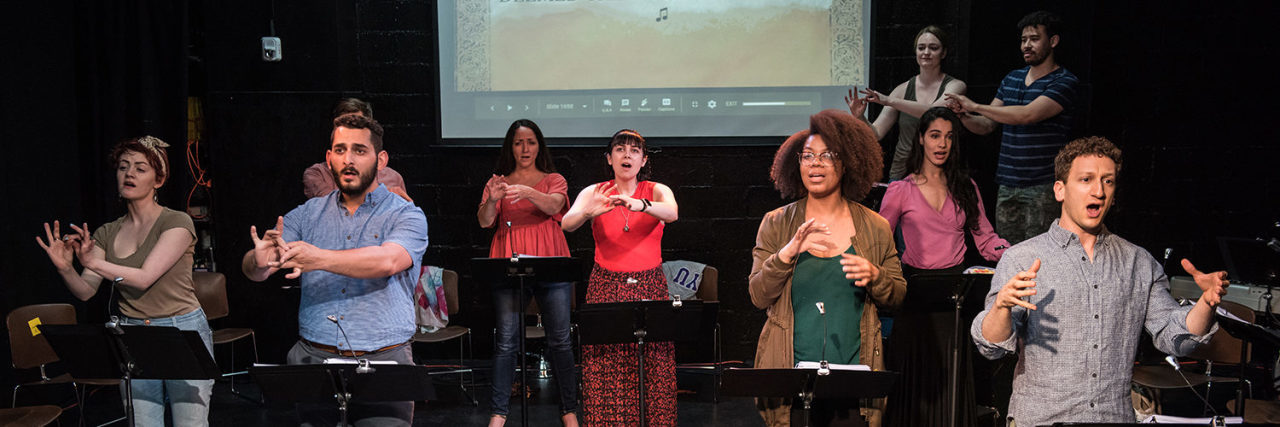At the IRT, a small performance space in New York City’s West Village, a small group of Deaf and hearing performers and crew are pioneering a new vision for inclusive theatre with “Stepchild,” a musical that combines songs, spoken word and American Sign Language. Their recent, groundbreaking work-in-progress presentation, funded by a grant from the CreateNYC Disability Forward Fund, aimed to make every aspect of the show accessible and meaningful to Deaf and hearing audiences alike.
Loosely based on the classic fairy tale Cinderella, “Stepchild” tells the story of Orella, a deaf girl coming of age during the Italian Renaissance. She and her widowed father Massimo struggle to eke out an existence as street performers until their shadow puppet shows attract a wealthy benefactor, the kingdom’s young prince Luca. As Orella’s father seeks out stability by courting Antonia, a widow with two daughters, Orella encounters Allegra, a mysterious fortune teller who is also deaf and teaches her how to communicate using sign language.
Orella discovers a joyous new world, but when she tries to teach others in the community about sign language, she attracts the ire of the ignorant and fear-mongering King, who ruthlessly punishes anyone that dares to embrace what makes them “different.” After an unimaginable tragedy, Orella finds herself fighting for her life, and must find the courage to combat the darkness and liberate her kingdom from oppression.
Although ASL and Deaf characters have become increasingly common in theatre, TV and film, it is rare for Deaf talent to be fully included in the development of shows outside of Deaf-run theatre companies. Kori Rushton, Producing Artistic Director at IRT, set out to change that by having a Deaf and hearing person collaborate on each major aspect of the production. Deaf and hearing directors worked together to ensure the production was accessible and engaging for audiences of all abilities, while the Director of Artistic Sign Language sought to convey the power of the lyrics and rhythm of the music in sign and movement.
Inclusive theatre is often discussed in glowing terms, as an ideal we should aspire to as part of making the arts more diverse, but what does the process actually involve? What does it take to make a show accessible, and what important lessons can the theatre world and audience members learn from productions like “Stepchild?” We asked the cast, crew and production team of “Stepchild” to share their thoughts.
Note: Responses have been edited for length, and in some cases translated from ASL or lightly revised for clarity. Please remember for many Deaf individuals, English is their second language.
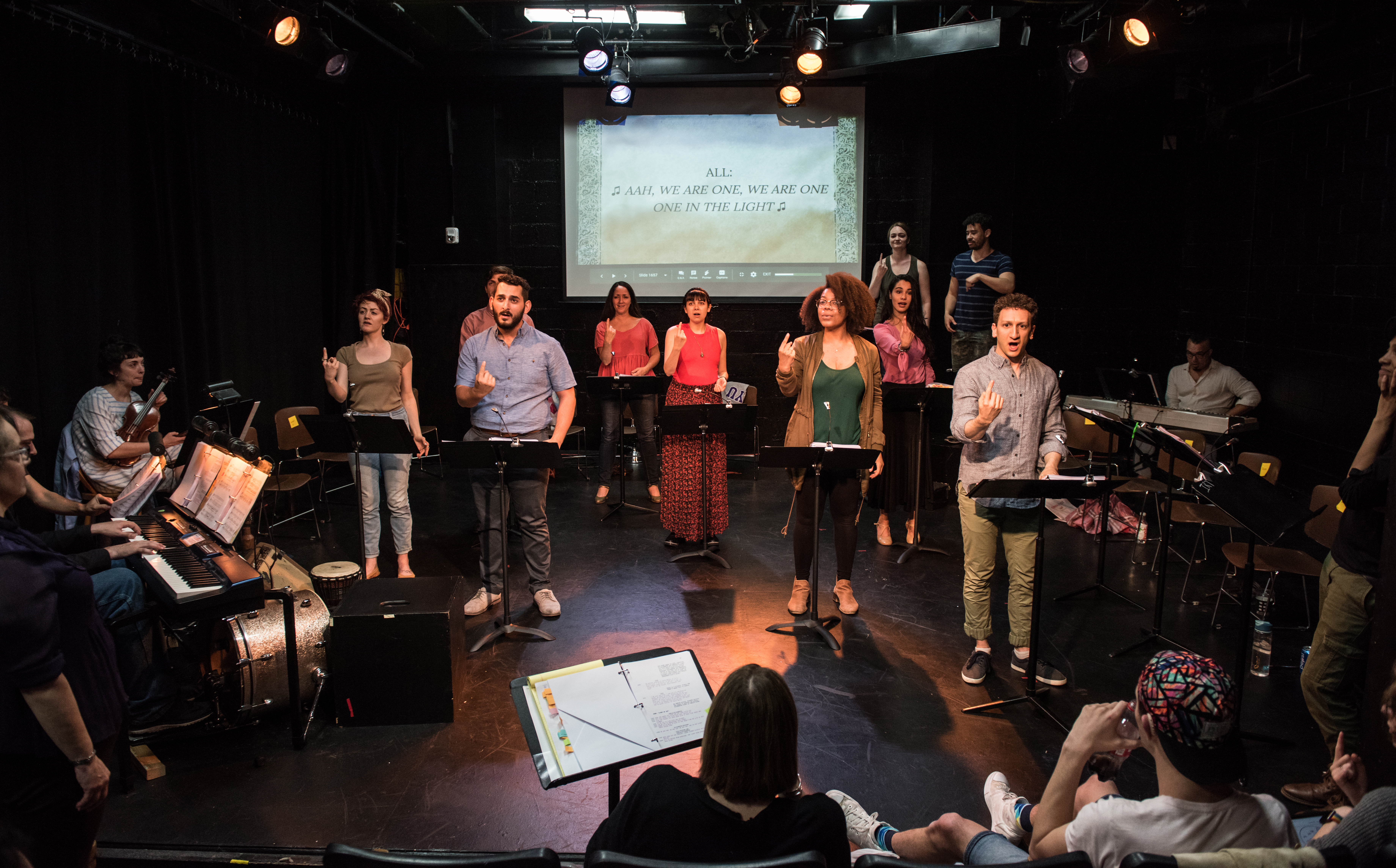
Although “Stepchild” is a fairy tale set long in the past, how does it shine a light on the discrimination Deaf people experience today?
“As we began delving into our research and outreach to the Deaf community, we uncovered a dark and at times brutal history for people with disabilities. The widespread disregard and common violence against many Deaf and differently abled people is a heartbreaking truth left out of our high school history books. So we set out to create a full length musical theater piece with the gravity of this dark historical past and the weight of mankind’s propensity for vilifying ‘the other’ as our dramatic base. Once that was in order, we were then able to layer an empowering and enlightening original fairy tale on top. As storytellers from our own diverse backgrounds, our goal is to tell a story about how ignorance, prejudice, and fear of ‘the other’ can divide a family and the community at large.” — David James Boyd and Chad Kessler, Creators of “Stepchild”
“‘Stepchild’ takes place in 1590 Italy, but the story is modern and one that still affects Deaf children today. Although ASL is the third most spoken language in the U.S., many parents of Deaf babies are not encouraged to teach their children sign language, while using baby sign language for hearing babies is all the rage. This disconnect needs to be addressed.” — Kori Rushton, Director of IRT and Producer of “Stepchild”
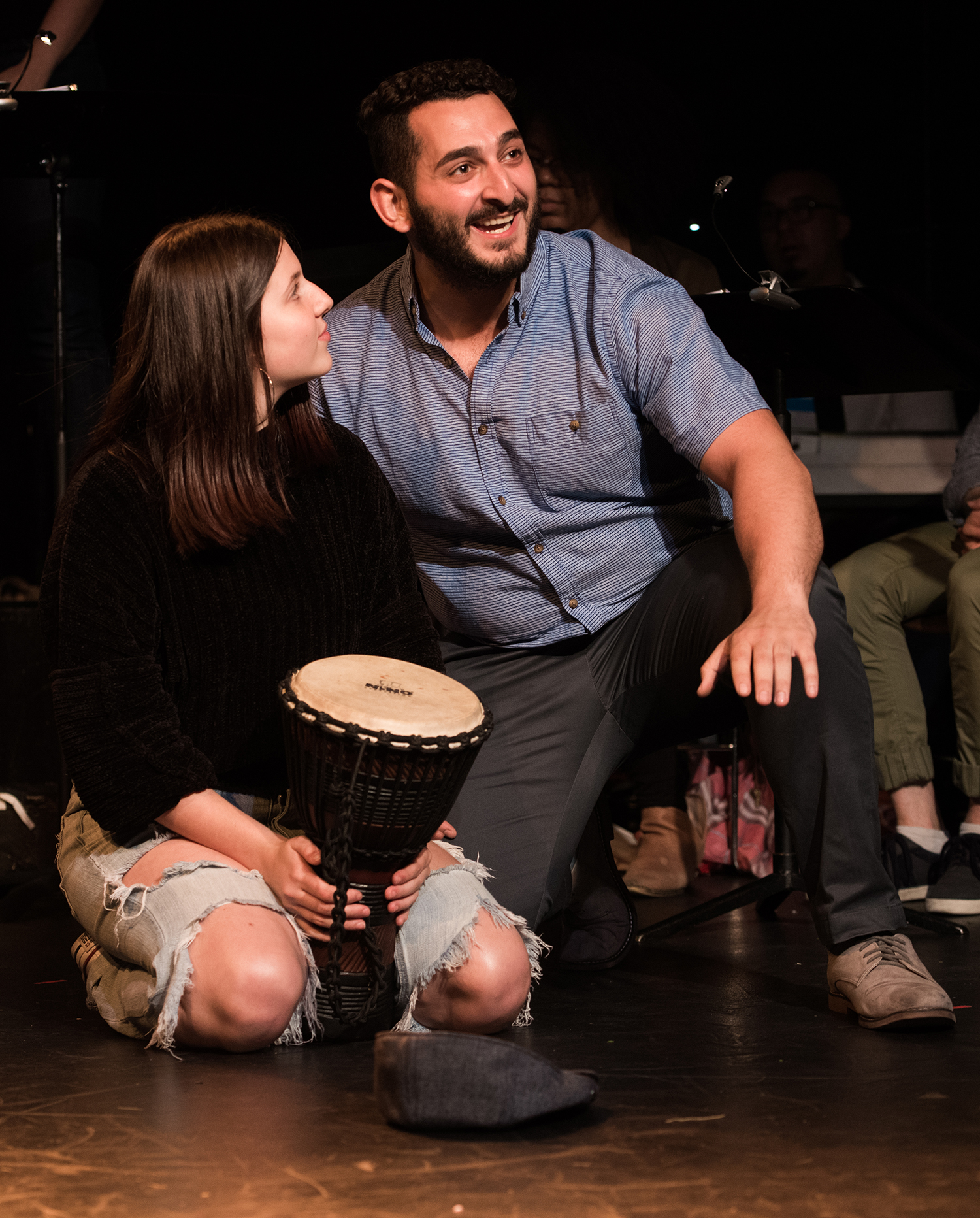
“As have other ethnic groups and cultures, the Deaf have had to fight for the existence of and the right to their language. The deprivation of language acquisition is political and abusive. Political because it is about control and abusive because of the severe psychological, emotional and social harm it does to the individual.” — Kim Weild, Hearing Director
“I absolutely enjoy the Deaf spin on the classic nursery tale. It’s a wonderful retelling and really elevates the issue of language deprivation (in terms of teaching American Sign Language at early ages) that is sadly predominant with Deaf children these days.” — Annie Wiegand, Deaf Lighting Designer
“There are still people who are unaware of the prejudice against sign language and its usage. A lot of hearing audience members, including hearing castmates, were really moved by this story and were shocked to learn that those same biases against sign language exist today, all around the world; whereas the Deaf audience and cast members know this to be a tale as old as time. I think the story is a great allegory and the whole cast is so talented — I’ve enjoyed working with them all.” — Dickie Hearts, Deaf Actor (Prince Luca)

How did creating a musical with ASL and spoken language allow you to collaborate and connect in new ways?
“I sang the music for Dickie Hearts (Prince Luca) and found it wonderfully challenging for us to become one voice. For example, I’d match the dynamics of his acting beats and ASL to the musical and emotional dynamics of my voice, all while keeping in time with the music.” — Johnny Link, Hard of Hearing Actor (Luca’s Voice/Tristan)
“As Allegra’s voice, it was imperative I understand what Alexandria Wailes was signing so I could match her speed and meaning of the text. There were times when it would be hard for her to see me to start signing and I assured her I would follow her. She was very clear in her intention, making it easy for me to understand. Also, as in any musical, there are times when vocal entrances have to be coordinated with the orchestra. In these cases, both Alexandria and I had to take a cue from our conductor. It was the only time I had to take my eyes off of her and trust that we would all begin the phrases at the same time.” — Tamra Hayden, Hearing Actress (Antonia/Allegra’s Voice)
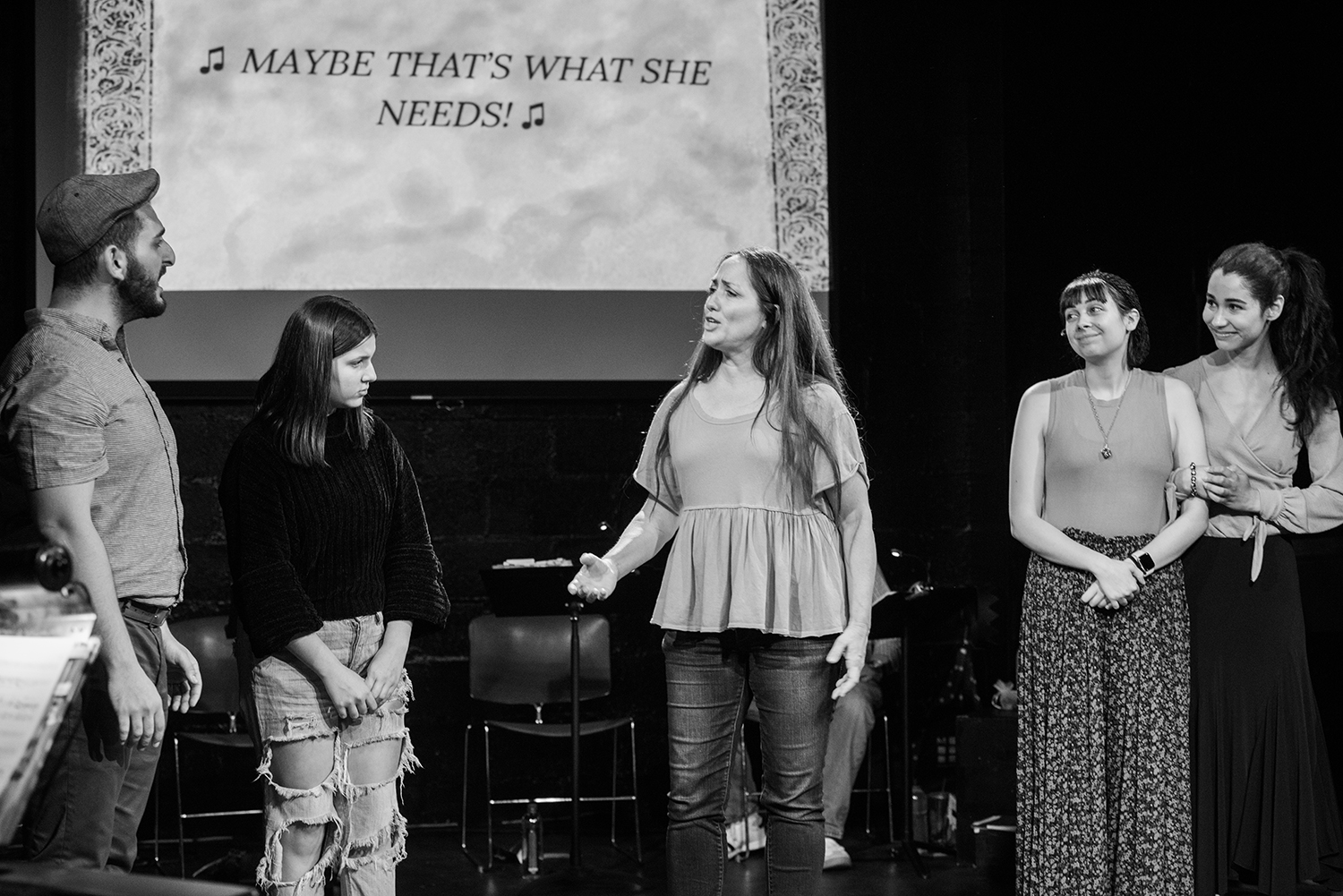
“We uncovered some challenging questions during our process. One of those, which probably should have seemed obvious, was how does music, and signing in particular, function in a world of Deaf and signing characters? There’s a scene where all five people (two of whom are Deaf) are communicating seamlessly in ASL. Suddenly the music starts and three signers burst into song even though we’ve never heard their voices. I don’t know that we answered the question of how to deal with what the script and score were asking us to do there, but it sparked some interesting conversations. What level of verisimilitude are we working towards? How much disbelief can one suspend? As an actor, how can one justify choices that serve the notion of what people consider musical theater while existing truthfully in a moment in Deaf space? We need to keep talking and thinking.” — Craig Fogel, Hearing Actor
“How do we honor ASL artistry expression side by side with vocal expression and musical expression? How do we keep our place without losing our pace through the musical journey? There are different ways to merge the expressions in one united form without compromising the lyrics, the music notes and the signing. It is easy for ASL to be the component that suffers the loss. It is a constant reminder on my part to help everyone open their mind to various ways of approaching the piece without giving priority to music and singing voices. We must also make sure the ASL has equal power and accurate translation. Because it was first written in song format and/or in English, finding the artistic expression in the translation is important. For example, the lyrics have words that rhyme; how do I bring rhyme in the handshapes or movement of the words? The rhyme in movements and handshapes might not happen in the same place where words rhyme, but they have their own presence.” — Terrylene Sacchetti, Director of Artistic Sign Language
“Watching Terrylene, the Director of Artistic Sign Language, build, rehearse and take notes on the sign language with the actors was especially educational. Sign is so specific onstage. As with music, speech, dance, and design, there are two tasks at hand. One is to communicate the story and the second is express the story. The latter depends on energy. The tension in Amelia’s fingertips has to match the tone of Nicole’s voice has to match the pace of the band, the hue of the lighting, the choreography of the rest of the ensemble. It is one impossible and magical feat of spontaneous communication!” — Rose Beth Johnson-Brown, Hearing Assistant Director
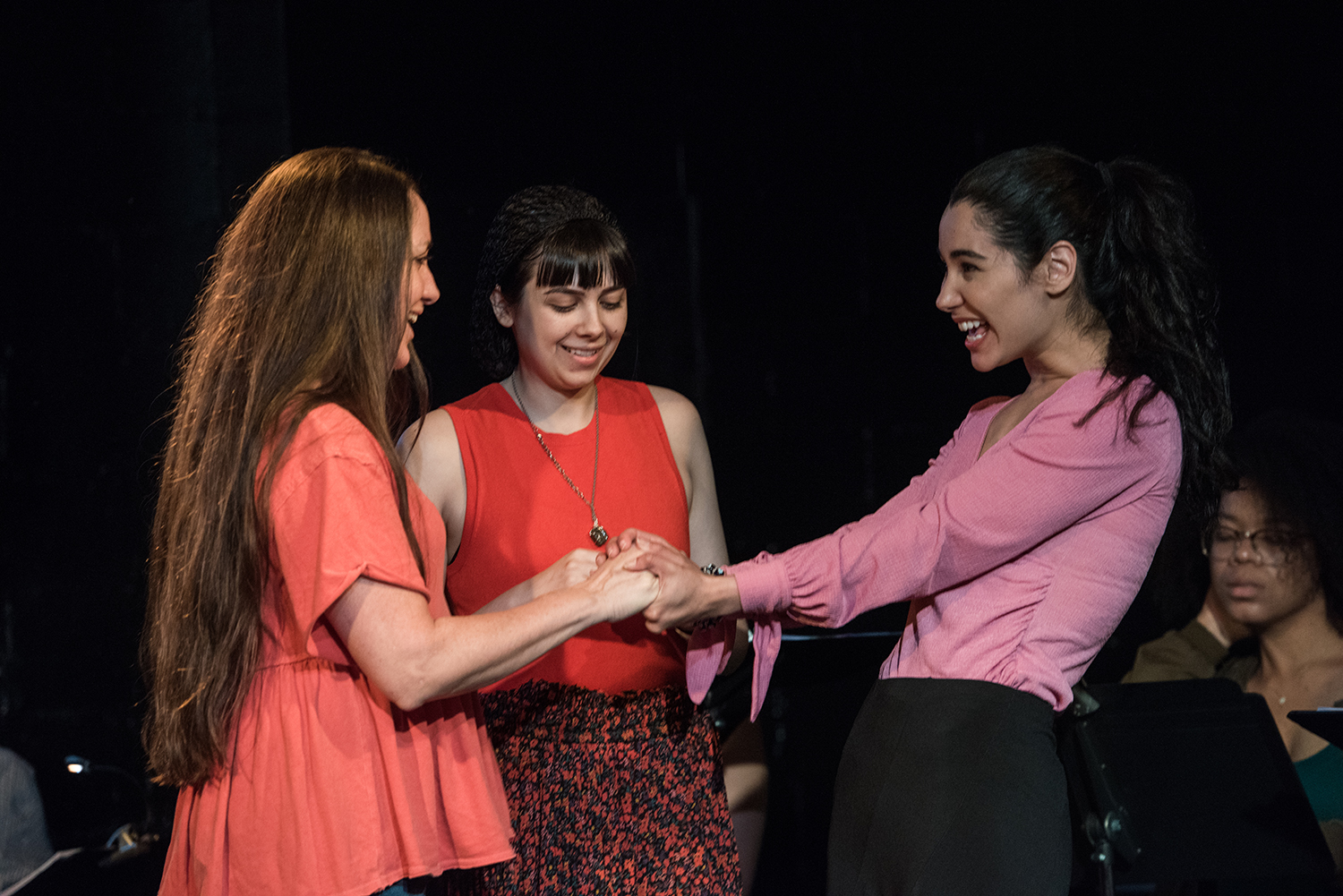
“There is no standard/system in place for theatre including the deaf, so I’ve learned from each production. This production really helped me to see that we need to teach the music to the deaf actors by teaching them how to read the score. We need to give sensitivity training to the hearing cast so they understand how to form a better ensemble with their deaf cast mates by simply signing, being aware and understanding what the process is like for deaf people.” — Joshua Castille, Deaf Associate Director
“I learned how to listen with my eyes, my hands and my whole body. Creative listening is the best way to learn. Over the course of the process I read the Oliver Sacks book ‘Seeing Voices.’ I recommend this for any hearing person proximate to deaf culture. Or any hearing person in general. Because I did not grow up with that much knowledge of deaf culture, I knew I had a lot of work to do in and out of the rehearsal room. For me research is a necessary tool for understanding my privilege. Josh Castille, the associate director, and I worked extremely well together. Walking, talking, drinking, snacking, and working with him was especially eye-opening.” — Rose Beth Johnson-Brown, Hearing Assistant Director
“I love how accessible the show is — it was great to see captions for all the languages (spoken and signed), plus
captions for music/lyrics and sound effects. I also like how the team made the captions aesthetically pleasing, as opposed to plain, boring subtitles. The main feedback I’ve gotten from the Deaf community was about how fully accessible this show was — so the team really got that part right.” — Dickie Hearts, Deaf Actor (Prince Luca)
“ASL is a language we both can use to communicate together without requiring anyone to hear a sound. It is really beautiful to see both work together. We teach them how to listen through their eyes and they teach us how to understand the music. Basically music is their world and our eyes are our world.” — Amelia Hensley, Deaf Actress (Orella)
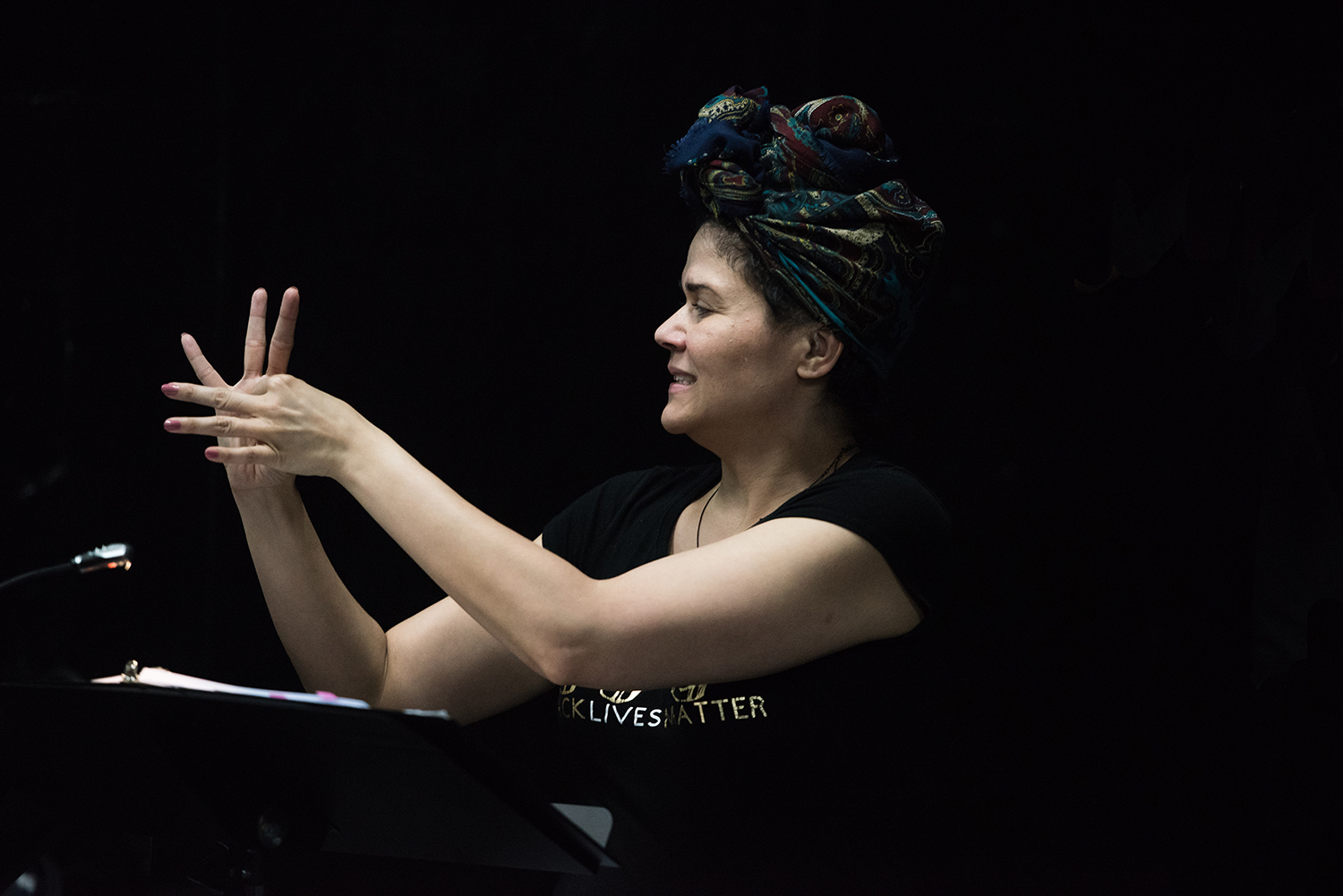
How does inclusivity make theatre better?
“The combination of two cultures on stage reflects the theme of the show, that we are one and work best together. It creates a beautiful picture of humanity that is both captivating and unique… No matter our differences, we all share the human experience. We are stronger together.” — Johnny Link, Hard of Hearing Actor (Luca’s Voice/Tristan)
“As this show is being created with both ASL and English simultaneously, both languages have equal footing in the presentation of the play. Usually, ASL is an afterthought and is translated later based on the English language. So both the auditory and visual elements are equally elevated in the show and make for such a stronger production.” — Annie Wiegand, Deaf Lighting Designer
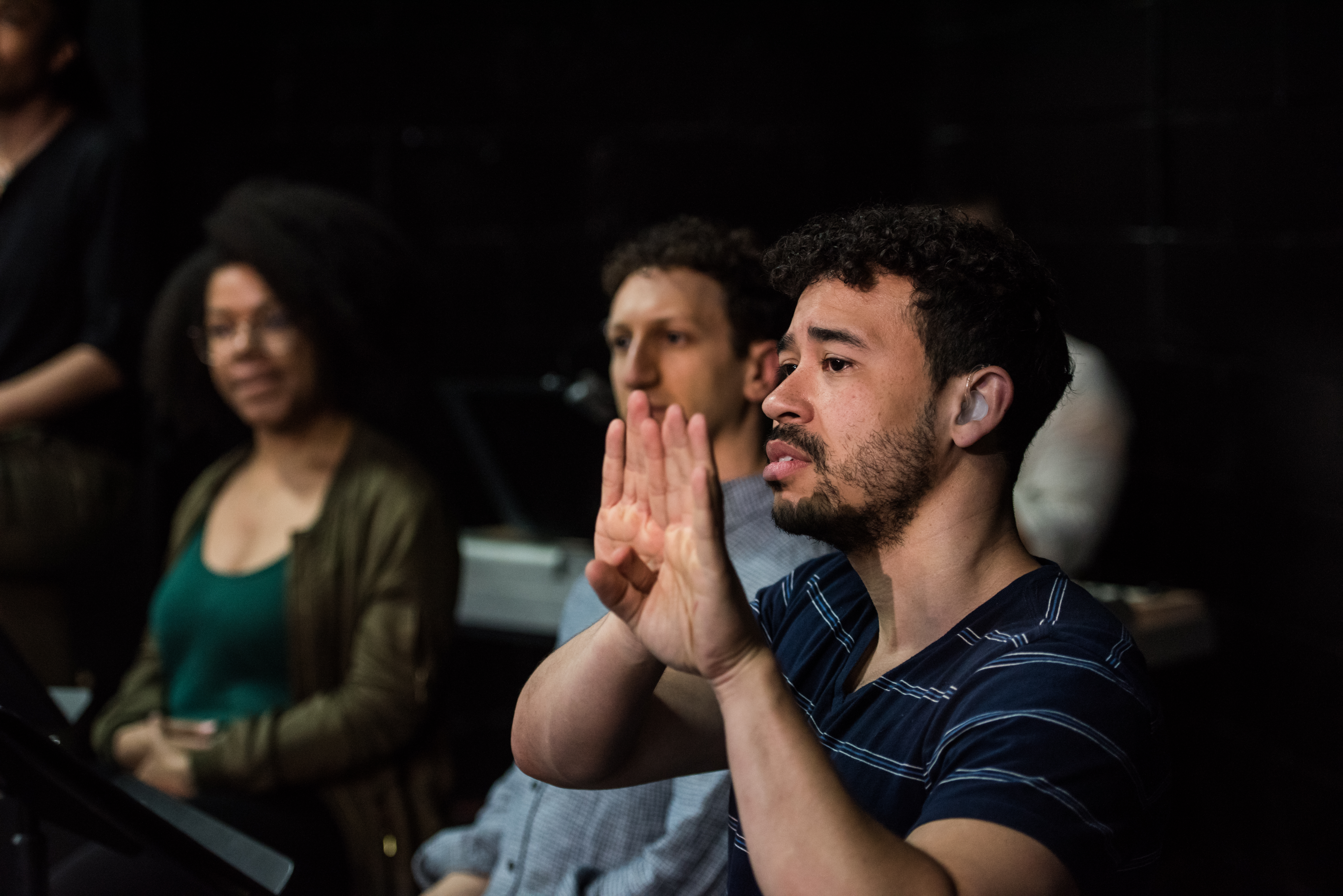
“As ‘Stepchild’ is a musical, there is an exploration within the world of sound which does involve a lot of quiet and sometimes complete silence. In addition, ASL has its own rhythms, movement, musicality that also explore intensity and stillness.” — Alexandria Wailes, Deaf Actress (Allegra)
“We work a lot with the use of gorgeous projections as well as actor voicing and even some shadow play in order to best communicate parts of the story where these different forms of communication are best served. The cohesiveness of the story, however, is fully in the hands of our tribe of actors, who have been working hard to cultivate a seamless wave of communication between the actors and the audience so we are presenting this story clearly and in the most accessible way possible.” — Christopher Isolano, Hearing Actor (Massimo)
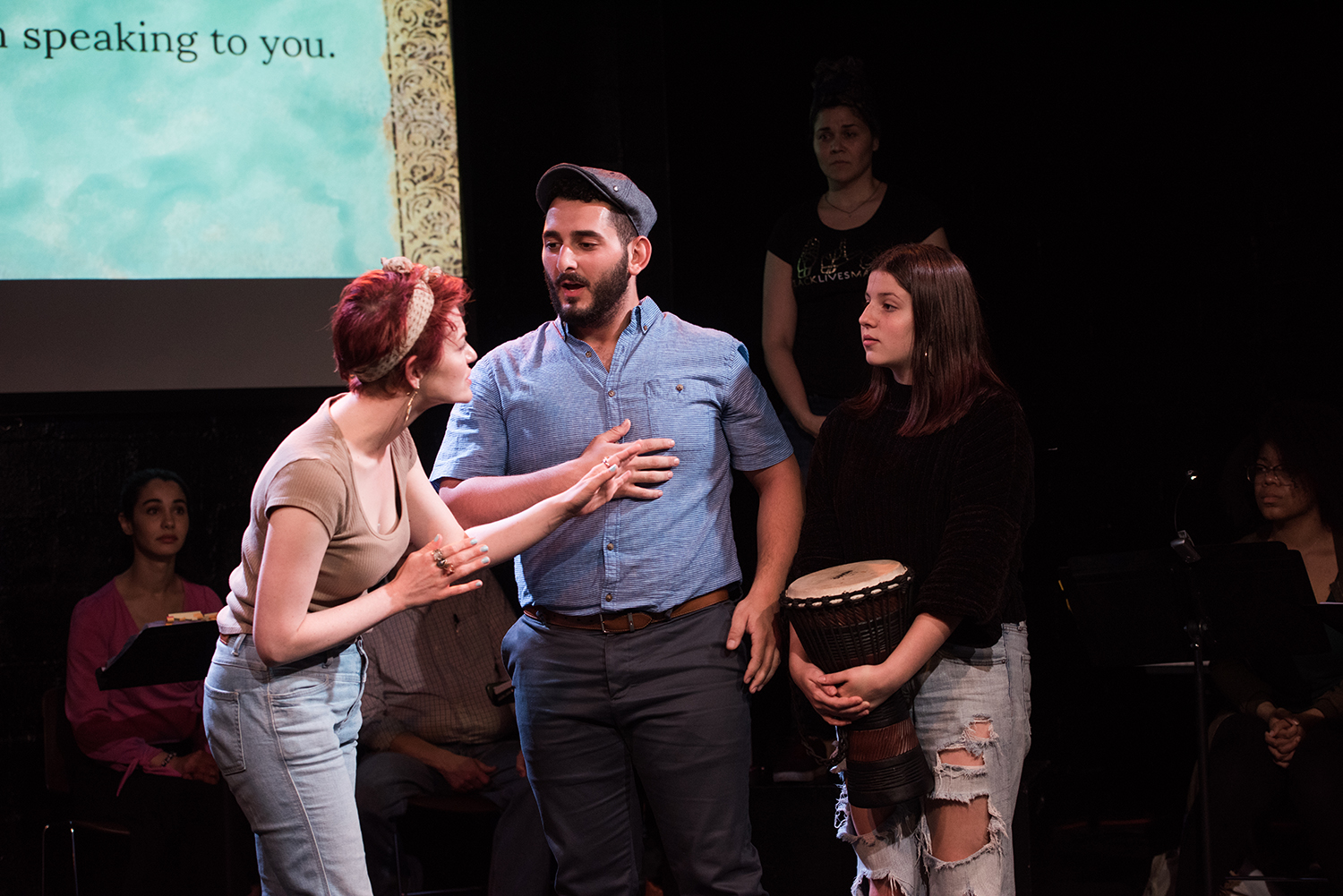
What do you hope people take away from “Stepchild”?
“I hope audiences walk away with the sense that this show is a true collaborative effort in so many ways. The bond the cast and creative team share — the trust, the respect and the genuine love for working with one another — is something special and I think it shines through in the work.” — Alexandra Mazzucchelli, Hearing Actress (Gabriella)
“It is always my hope that people learn empathy towards others who are not like them through theater and art. Stepchild has several opportunities to see people of different cultures, backgrounds and abilities as complex beings in the midst of terrible circumstances based on historical realities that will, hopefully, never be repeated in our future.” — Tamra Hayden, Hearing Actress (Antonia/Allegra’s Voice)
“There are two messages here. One is that we, the artists, deaf and hearing are working side by side with regard for our equal place of employment and respect for each other’s talent. No matter what language we speak, we are here to create a beautiful piece of artistic expression. How do we magically bring the beauty of all forms of art into one expression? I hope the life and the message of the musical will help the audience to realize that not much has changed. There is work to do in our community to uplift the Deaf community and the issues they continue to face. I hope that the play will inspire the audience and create more allies for the Deaf community so the concerns may be resolved once and for all.” — Terrylene Sacchetti, Director of Artistic Sign Language
“I hope audiences will see that being Deaf or Hard of Hearing isn’t a tragedy. I hope they will see Deaf culture is beautiful.” — Emilia Salazar, Deaf Intern
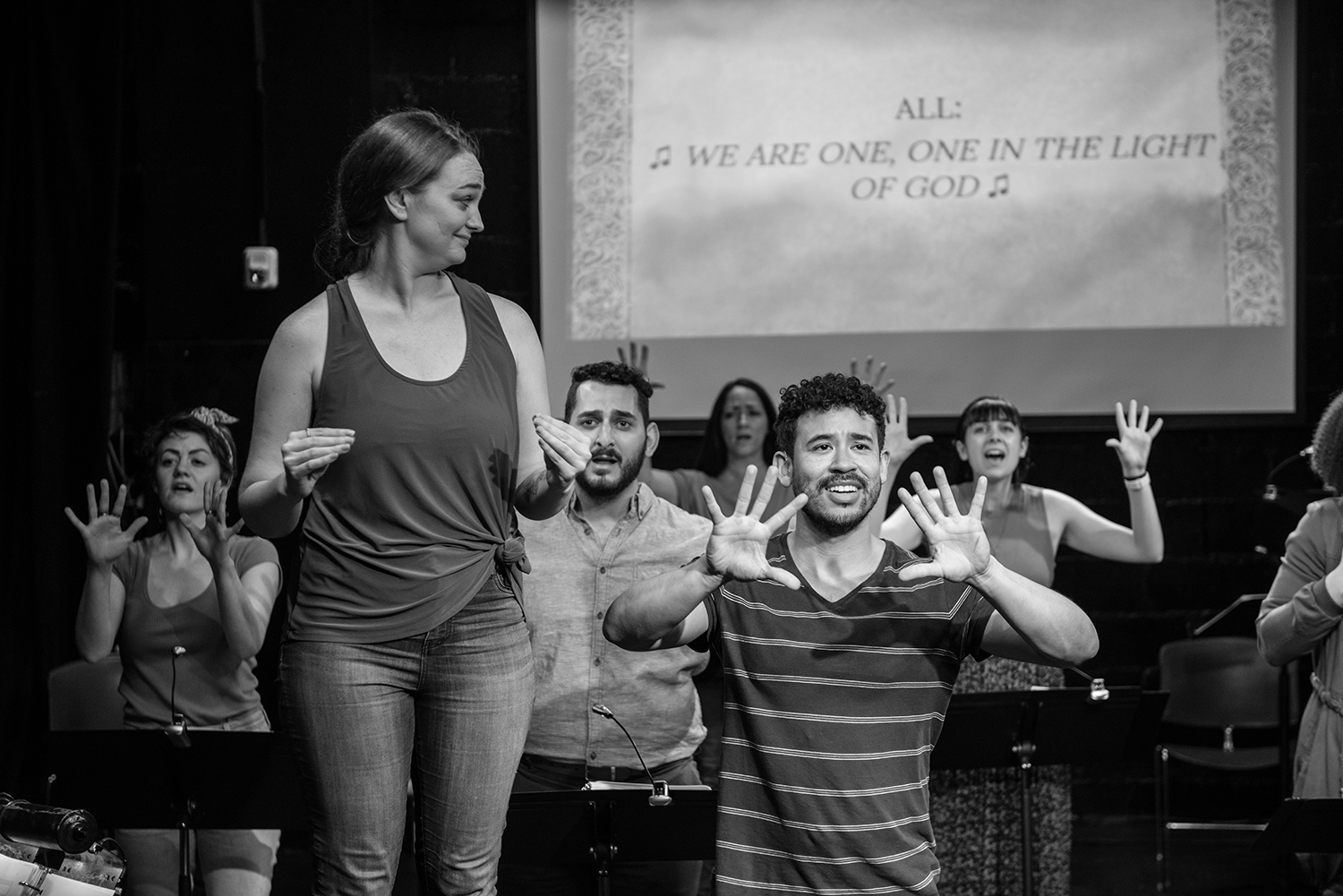
How can we make theatre more inclusive?
“I think it starts by increasing diversity in the production team. When we have more producers and creative team members with disabilities, it gives more access to the audience. I as a deaf director made some decisions I felt were more accessible for the audience, such as captioning designs and adding balloons for the audience to feel the music more.” — Joshua Castille, Deaf Associate Director
“Accessibility continues to be a huge challenge for a Deaf theatre artist. I’ve been designing lights professionally for 10+ years now. Sadly, I still have the same issues today that I have faced all these years, which is a lack of continuous work. I simply do not have the same job opportunities as my hearing counterparts because I need access – and for theatre companies, this is a complicated task to take on. Embrace the challenge, and in turn, bring new perspective and life to your shows.” — Annie Wiegand, Deaf Lighting Designer
“Theaters and Arts Funding Organizations need to focus their funding practices on making theater accessible from the rehearsal room to the performances. Differently abled individuals need to be included in the conversations/processes of making these changes. This process also demands the increase in differently abled stories on stage and paying jobs for differently abled actors/directors/designers etc. This is an expensive and urgent priority.” — Rose Beth Johnson-Brown, Hearing Assistant Director
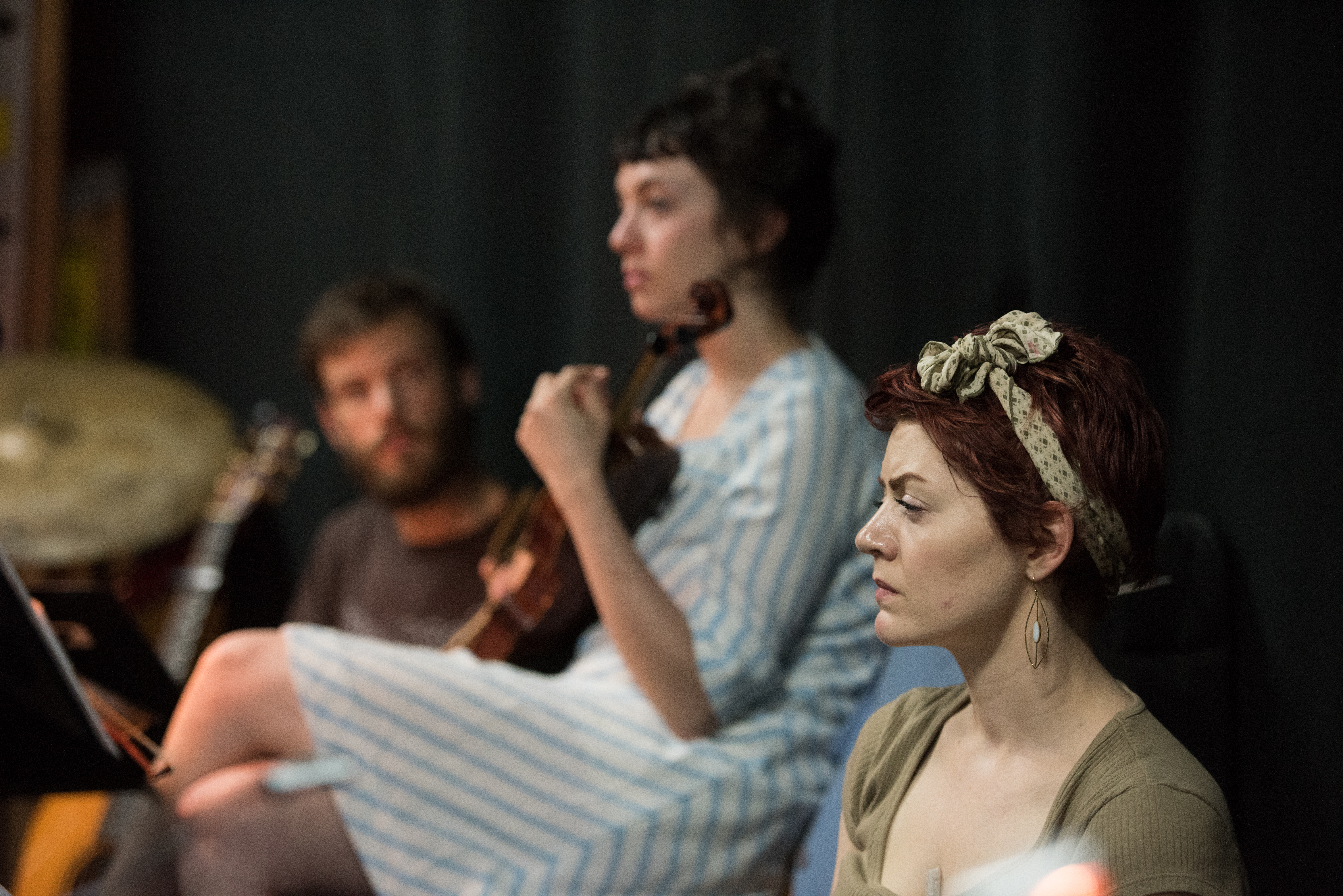
“The most important thing, in my opinion, is giving diverse artists the space and resources to tell their own stories. I would also love to see less ableist casting for all projects. Historically, who holds the most power in this industry? Able-bodied people who are mostly male and mostly white, who have access to resources and finances. A lot of things are seen through that very narrow lens. Just because a character is written as a hearing person, why not consider a deaf person for the role? It hurts no one to consider actors with different abilities for these roles, and the representation matters so much. In addition to being an actor, I am also a theatre producer. I think a lot about how to make the theatre more accessible, from making ticket prices affordable for lower-income folks, to putting on shows that can be enjoyed by those with physical/sensory differences. I think that again, the answer comes back to giving the power to diverse creators with diverse perspectives. As a hearing person, I could theorize all day about how a deaf person wants to see theatre. Instead, let’s follow their lead.” — April Lavalle, Hearing Actress
“One of the most important things we can do to increase diversity is to make sure that characters who have a disability are being cast authentically and played by actors with those same disabilities. Disability is a lived experience, not a technical skill. But even if a project doesn’t have characters with disabilities in it, creative teams should be open to actors with disabilities auditioning for those roles anyway. We already have plenty of able-bodied actors taking roles with disabilities and then winning awards for it — it’s a slap in the face to us.” — Dickie Hearts, Deaf Actor (Prince Luca)
“‘Nothing about us, without us.’ I believe that it begins with the people who are at every level of a company, including producers and investors. However, it is challenging when physical space does not allow for a diverse pool of talent. I guess a solution to that would be to seek out other venues or redesign preexisting facilities or start from the ground up as far as the architecture. I think diversity can also be increased when we acknowledge how complicated intersectionality is and then find ways to celebrate that — rather than focusing on solutions towards fitting a minority into the majority.” — Alexandria Wailes, Deaf Actress (Allegra)
“There are so many stories, not just stories about Deafness and sign language, but stories that might happen to include Deaf people and sign language that need to be told. And they’re worth attempting to tell. With very limited resources we dove into this process. I hope other people will invest in explorations like this so we can answer the questions we left hanging and uncover new ones.” — Craig Fogel, Hearing Actor
“Have an open mind and an open heart and be willing to work with artists of all abilities. Diversity is so important, as multifaceted people can bring so much to a show. The more diverse a show’s creative team and cast are, the better the show will turn out.” — Annie Wiegand, Deaf Lighting Designer
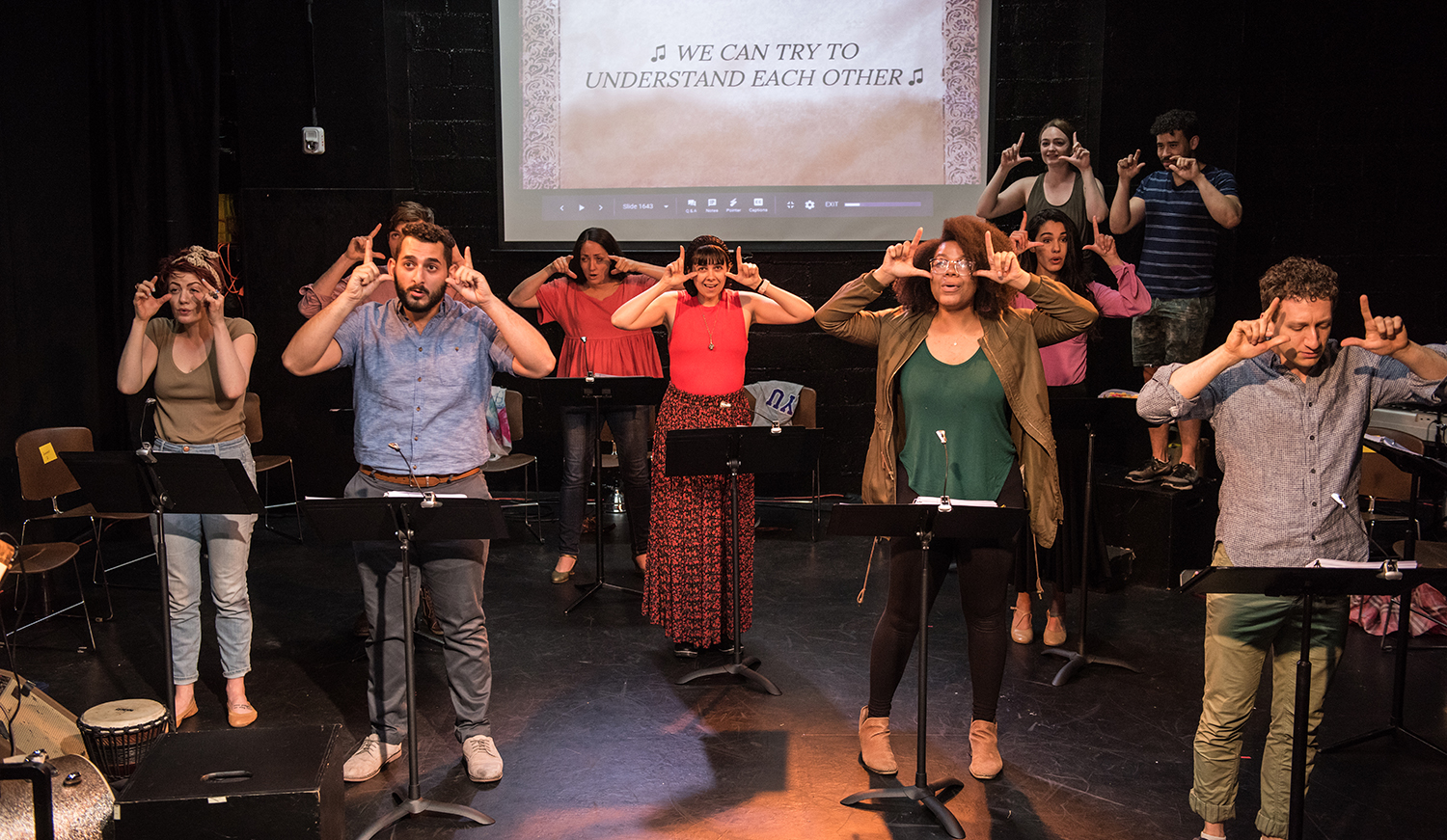
All photos by Suzanne Fiore.

